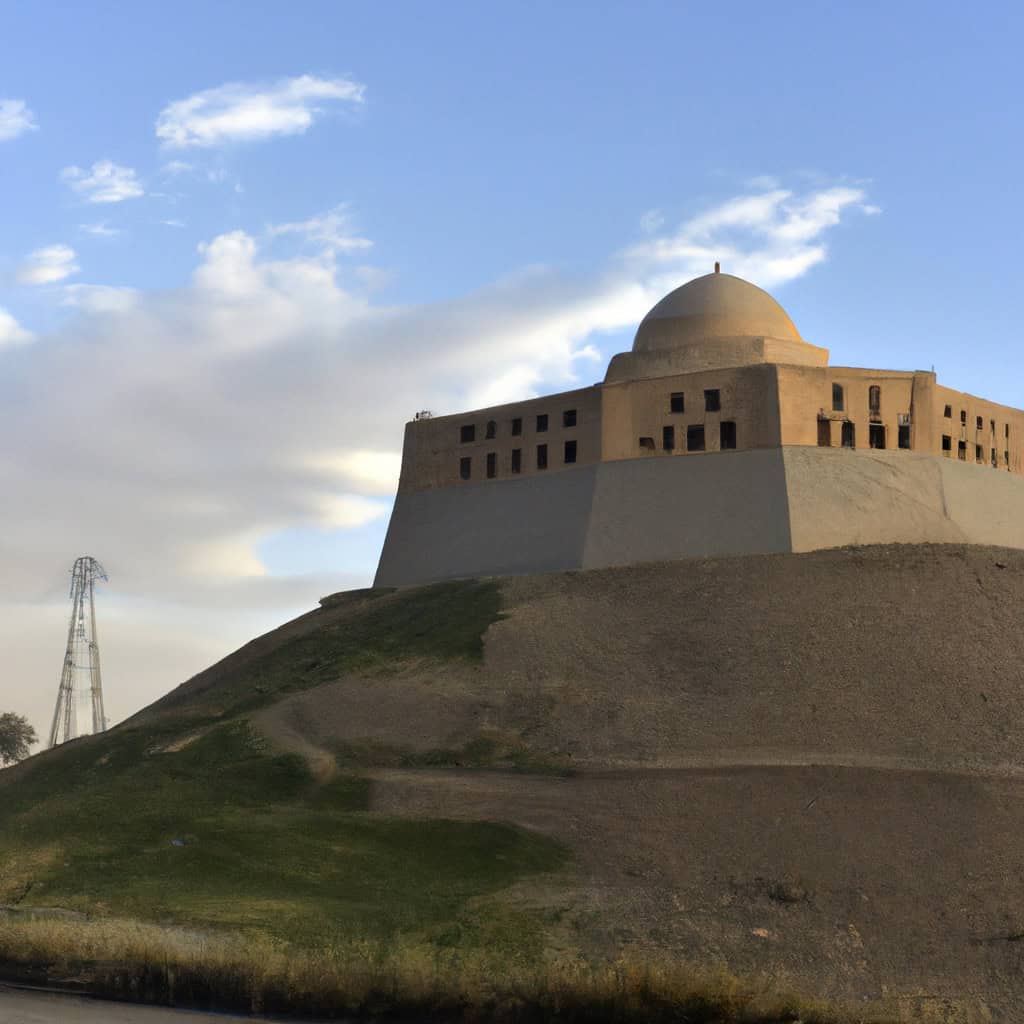Qala-e Sultan in Ghazni City, is one of many fascinating sites that both foreign visitors and local tourists can explore while they visit Afghanistan and explore Ghazni Province. Nestled amidst the historical province of Ghazni, the fortress of Qala-e Sultan serves as a captivating and enduring remnant of Afghanistan’s long and fascinating history. It’s the silent witness to numerous significant events of Afghan history, which exclusively added notches to its cultural significance. Famous for its unique blend of historical richness and natural beauty, Qala-e Sultan has continually drawn historians, archaeologists, and travel enthusiasts from across the world to explore its ancient appeal and timeless allure.
Qala-e Sultan Most Important Events
- The Warrior’s Triumph: One of the most impactful historical moments at Qala-e Sultan is the triumph of the Sultan Mahmud Ghaznavi in the 11th Century, turning it into a symbolic fortress of power and victory.
- The Siege of Ghazni: The lapse into Afghan control and subsequent sieges during the First Anglo-Afghan War is another significant event that imbued the fortress with a deeper historical value.
- The Cultural Revival: The turn of the 20th Century came with architectural renovations that aimed to preserve its historical appeal, making a substantial contribution to its existing grandeur and legacy.
History of Qala-e Sultan in Ghazni City
Qala-e Sultan has a rich and varied past dating back several centuries. Originally, the fort is believed to have been constructed during the Ghaznavid era in the 11th Century. The Ghaznavids, originally Turkic slave soldiers, had recently ascended to power, with Sultan Mahmud Ghaznavi at the helm. Sultan Mahmud used bold and ambitious military exploits to claim a vast empire that stretched from Iran to India, and Qala-e Sultan played a strategic role in these ventures.
In 1839, during the First Anglo-Afghan War, Ghazni City and Qala-e Sultan played a crucial role. The fort was the scene of the Battle of Ghazni, where British forces managed to capture the city after a hard-fought siege. This led to a significant control shift from the Afghans to the British empire, making an indelible mark on the history of Qala-e Sultan.
The 20th Century, however, saw significant efforts from the Afghan government to repair and restore the fortress. Architectural interventions helped in retaining the old-world charm and re-emphasizing the historical and cultural significance of Qala-e Sultan, consequently adding layers to its history.
Why It’s Important to Afghan History
Qala-e Sultan plays a vital role in Afghan history, providing valuable insights into the various eras and dynasties that the country has undergone. The fort’s existence during the Ghaznavid era and later years serves as a testament to the resilience of Afghan architecture and culture amidst the challenges of time and war.
Moreover, Qala-e Sultan’s strategic location, historic events, and links with prominent periods of Afghan history make it an incredible epitome of Afghan heritage. The monument’s tale is indeed interwoven with the enduring narrative of Afghanistan itself, retelling stories of legacy, regality, conflict, resilience, and cultural pride.
Why to Visit Qala-e Sultan
Visiting Qala-e Sultan is like witnessing a historical performance unfurl right before your eyes. Its awe-inspiring architecture, the remnants of its glorious past, and the serene beauty of its surroundings combine to create a unique travel experience. Besides exploring its history, visitors can soak in the panoramic views and appreciate the timeless beauty of Afghan landscape from its high points.
- The fortress’s grand historical architecture
- The picturesque views of the surrounding landscape
- The immersive experience of walking through centuries-old corridors
- The marveling at the fort’s intrinsic defense layout
- The opportunity to learn and unravel the history of Afghanistan
Qala-e Sultan lies in the heart of Ghazni City. The city has good connectivity with the rest of the country, making the fortress easily accessible. The best time to visit Qala-e Sultan is during the milder spring or autumn seasons when the weather is most conducive for exploration.
Cultural & Tourist Significance
Qala-e Sultan holds immense cultural and tourist significance. Culturally, it represents the grandeur of the Ghaznavid era, the resilience of Afghan architecture, and the spectral narrative of Afghan history all encapsulated within its formidable walls. Its significance extends far beyond its geography or architecture; it symbolizes the cultural heritage of Afghanistan.
From a tourist perspective, Qala-e Sultan is undoubtedly a jewel in the crown of Afghan tourism. Its edifice stands mighty and timeless, attracting visitors with its narrations of glorious battles, imposing rulers, changing eras and the evolution of a civilization.
Further, Qala-e Sultan appeals to a range of tourist cohorts – from history buffs, architecture enthusiasts to nature lovers. Its structural beauty coupled with the placid charm of Ghazni province ensures an enriching travel experience for all.
Interesting Facts
Beyond the well-documented historic narratives, Qala-e Sultan is home to many lesser-known facts, myths, and legends.
Firstly, legend has it that Sultan Mahmud Ghaznavi used the fortress as a regal outpost. King Ghaznavi, as per the local folklore, would oversee his vast empire from this vantage point, and it’s also said to have housed his gigantic contingent of soldiers.
Secondly, it is believed that Qala-e Sultan was connected to other forts within the city via underground tunnels. These tunnels allegedly served as a secret network of transportation, escape, and utility corridors during intense wartime.
Lastly, the fortress’s strategic design and framework display a noticeable Chinese influence on the Afghan architectural style of that period. This makes Qala-e Sultan a beautiful blend of Afghan and Chinese architecture, which is an intriguing fact considering Afghanistan’s geographical and ethnic composition.
In conclusion, Qala-e Sultan is an absolute must-visit for anyone looking to dive deep into Afghanistan’s historical richness, architectural artistry, and cultural legacy. Steeped in history, filled with legends, and buoyed by its serene natural ambiance, the fort stands as a beautiful juxtaposition of past and present, history and nature – capturing the true essence of Afghan heritage.


